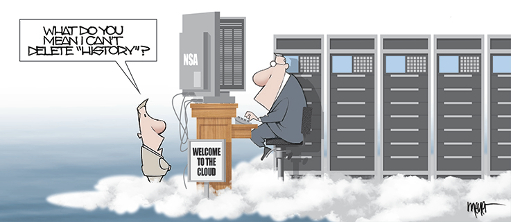Tuesday, January 24, 2017
Monday, January 23, 2017
A cartoonist on the Inaugural protests
The First Day of the Resistance
Dispatches from the front lines at the inauguration
by Sophie Yanow
The Nib January 23 2017
https://thenib.com/welp-people-came-out-to-protestAnother cartoon diary of the Women's March
Cartoonist Katie Fricas draws the march on Washington – in pictures
Katie Fricas interviewed women at the anti-Trump march in DC on Saturday – here's what they had to say
Katie Fricas
https://www.theguardian.com/us-news/gallery/2017/jan/22/cartoonist-katie-fricas-draws-the-march-on-washington-in-pictures
A cartoon diary of the Women's March
My Cartoon Diary of the Women's March on Washington
Migraines, bad signs, and heartbreak.
http://www.slate.com/articles/news_and_politics/politics/2017/01/liana_finck_s_cartoon_diary_of_the_women_s_march_on_washington.html
Former DC resident Robert Aguirre-Sacasa on his Archie fandom
Archie and Betty and Veronica and Zombies
How a 76-year-old gang of teenagers wound up fighting the undead, meeting the Ramones, and starring in a sex-infused murder-mystery show on the CW.
By Abraham Riesman
*A version of this story appears in the January 28, 2017 issue of New York Magazine.
http://www.vulture.com/2017/01/archie-riverdale-cw-c-v-r.html
Local cartoonist Chip Beck interviewed
Our Man in Arlington
Covering Donald Trump as an editorial cartoonist
Covering Donald Trump as an editorial cartoonist
CBC News January 22, 2017
http://www.cbc.ca/player/play/860179011996/
06:13
Host John Northcott speaks with Ann Telnaes, editorial cartoonist for the Washington Post about the role of an editorial cartoonist today.
Sunday, January 22, 2017
'Magic Bullet' on the streets
"David Ross and I took Magic Bullet 14 to the Inauguration protests this weekend. At the Capitol, a guy from CSPAN ran up to us because he recognized the newspaper from picking it up at the comic stores. Later, near the security check in Chinatown, someone else flagged us down because his mother, an art teacher, would read it. Further west, around Franklin Square, we had a pleasant conversation with an anarchist, while the police set off concussion bombs and tear gas, beside us. We gave our last issues to a guy in McPherson Square, who told us that when he was in high school, his bedroom walls were decorated with show posters, and Magic Bullet pages."
Saturday, January 21, 2017
Comic Riffs talks to editorial cartoonists about Joe Biden
As Joe Biden exits, comedy bids farewell to a one-man gold mine
Washington Post Comic Riffs blog January 19 2017
https://www.washingtonpost.com/news/comic-riffs/wp/2017/01/19/as-joe-biden-exits-comedy-bids-farewell-to-a-one-man-gold-mine/
Comic Riffs talks to women creators before the March
Women's March: 8 great creative thinkers offer this advice for the sisters who follow in their footsteps
Washington Post Comic Riffs blog January 21 2017
https://www.washingtonpost.com/news/comic-riffs/wp/2017/01/21/womens-march-great-creative-thinkers-offer-this-advice-for-the-sisters-who-follow-in-their-footsteps/
Today: Mocomcon at the Silver Spring library.

Beginning at noon is Mocomcon at the Silver Spring library.
January 21, 2017
12–4 pm
Doors open for registration at 11 am.
900 Wayne Ave
Silver Spring, MD 20910
We are very excited to be holding our very first comic convention, MoComCon. This event is open and accessible to all. We want to attract seasoned comic conventioneers, novices, and the curious of all ages. The event will include a variety of panels, workshops, programs, displays, exhibits and cosplay — all free of charge.
Friday, January 20, 2017
Glen Weldon on superhero fashion
Jacket Required: With The Return Of 'The Ray,' Superhero Fashion Gets Layered
http://www.npr.org/sections/monkeysee/2017/01/18/510264892/jacket-required-with-the-return-of-the-ray-superhero-fashion-gets-layered
Thursday, January 19, 2017
Fantom Comics is safe haven during protests
Comic book store provides safe space for DC inauguration protesters
by Edie Nugent
http://www.comicsbeat.com/comic-book-store-provides-safe-space-for-dc-inauguration-protesters/
'Pigheaded' at DC Indie Film Fest next month
"The idea was always to go up to the Revolution": Jason Rodriguez speaks about his second Colonial Comics book

 JR: The third book is supposed to be mid-Atlantic history.
We don’t have any plans to start it immediately. With the first book, we put it
out there and started working on the second book. We got feedback on the first
that we incorporated into the second, but we want get new feedback before we
start thinking about the third book. I wouldn’t expect us to start working on a
third book for six months or so.
JR: The third book is supposed to be mid-Atlantic history.
We don’t have any plans to start it immediately. With the first book, we put it
out there and started working on the second book. We got feedback on the first
that we incorporated into the second, but we want get new feedback before we
start thinking about the third book. I wouldn’t expect us to start working on a
third book for six months or so.I wanted to include the Boston Tea Party in some way, and Jackie came to me with a pitch about actually tracing the tea trade – starting in China, following it through India, and then into Massachusetts and tracing the tea as it went into the harbor.
Another Resist! article
The Women Drawing Against President Trump, One Comic Strip at a Time
01.17.17
http://www.thedailybeast.com/articles/2017/01/17/the-women-drawing-against-president-trump-one-comic-strip-at-a-time.htmlSlate on 'March'
John Lewis' March Puts Obama's Legacy in Heartbreaking Perspective
By Isaac ButlerAnother Resist! interview
by AJ Frost












